San Bernardino is home to many interesting bird species, providing birdwatchers with an abundance of opportunities to observe and study them.
From migratory species to resident species, San Bernardino’s varied habitats support a variety of birds, including hawks, owls, waterfowl, and shorebirds.
The San Bernardino National Forest, San Bernardino Mountains, and Cajon Pass provide some of the best birding spots in the region. With a variety of habitats and food sources, San Bernardino is a great place to see a wide variety of birds.
Whether you are an experienced birder or just starting, there is something for everyone in San Bernardino.
1. Anna’s Hummingbird
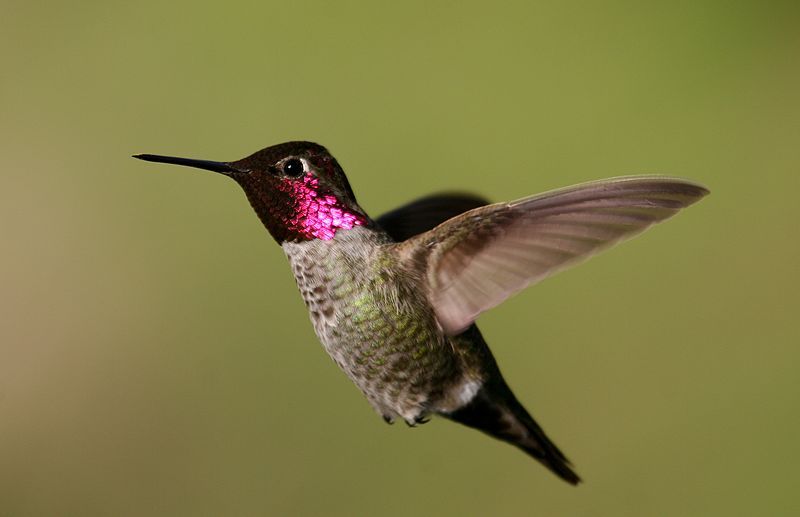
Anna’s hummingbird is a species of hummingbird found in North America. It was named after Anna Masséna, Duchess of Rivoli, which makes it a unique species.
The hummingbird is native to the western coastal regions, primarily in northern Baja California and Southern California.
In the early 20th century, Anna’s hummingbirds were only found breeding in these two areas, although today they can be found in many other parts of the United States and Mexico.
It is a small bird, measuring only 3.5 to 4 inches in length, and it boasts a bright green back and a pinkish-red throat. It has a long, curved bill and is known for its distinctive call.
Anna’s hummingbirds feed on the nectar of flowers, and they also eat spiders, gnats, and other small insects. They are highly territorial and will aggressively defend their feeding grounds from other birds and animals.
This species is important to the local ecosystem as it helps to pollinate flowers and disperse seeds. It is also a popular bird for birdwatchers and nature enthusiasts.
| Kingdom | Animalia |
| Phylum | Chordata |
| Class | Aves |
| Clade | Strisores |
| Order | Apodiformes |
| Family | Trochilidae |
| Genus | Calypte |
| Species | C. anna |
2. House Finch
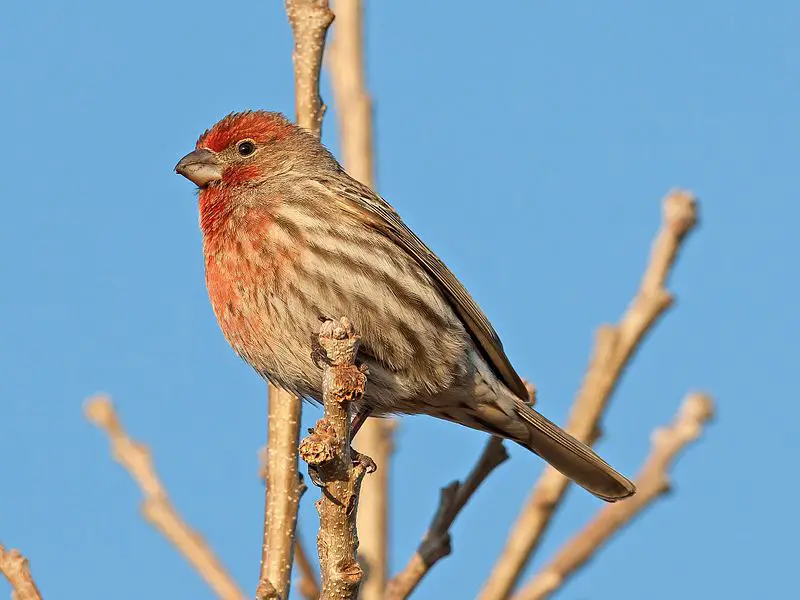
The house finch is a species of bird belonging to the Fringillidae family. It is native to the western parts of North America but has been introduced to the eastern half of the continent and Hawaii.
This particular species of finch is placed in the genus Haemorhous, alongside two other American rosefinches. House finches have a distinctively plump body shape with a short, round wingspan.
They usually have brownish feathers on their backs and rusty-red coloring on their breasts, although the exact coloring can vary depending on the region they inhabit.
The house finch is an adaptable species and can be found in a variety of habitats, from wooded areas to urban locations. They primarily feed on seeds and grains, although they will also eat fruits and insects.
House finches are a common sight in many parts of North America and are often seen in large flocks.
| Kingdom | Animalia |
| Phylum | Chordata |
| Class | Aves |
| Order | Passeriformes |
| Family | Fringillidae |
| Genus | Haemorhous |
| Species | H. mexicanus |
3. Mountain Bluebird
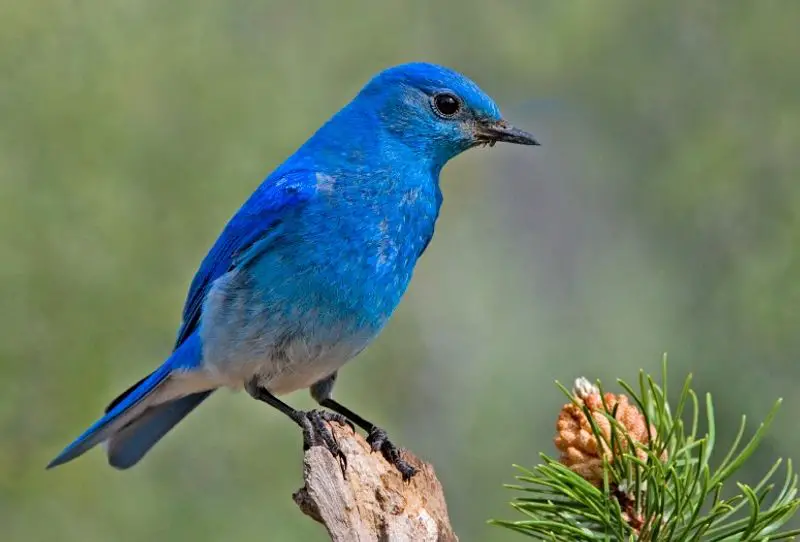
The mountain bluebird is a species of small thrush that is found in mountainous regions of western North America. It is a migratory bird, meaning that it will fly south in the winter and return in the spring.
The mountain bluebird has a light-colored underbelly and bright black eyes. Adult males have thin bills and a striking turquoise-blue plumage, with a slightly lighter shade of blue on their undersides.
The mountain bluebird is a sight to behold in the wild, with its vibrant colors and unique appearance. It is a bird that is familiar to many people in North America, and it is an important species of bird in the region.
| Kingdom | Animalia |
| Phylum | Chordata |
| Class | Aves |
| Order | Passeriformes |
| Family | Turdidae |
| Genus | Sialia |
| Species | S. currucoides |
4. Yellow-rumped Warbler
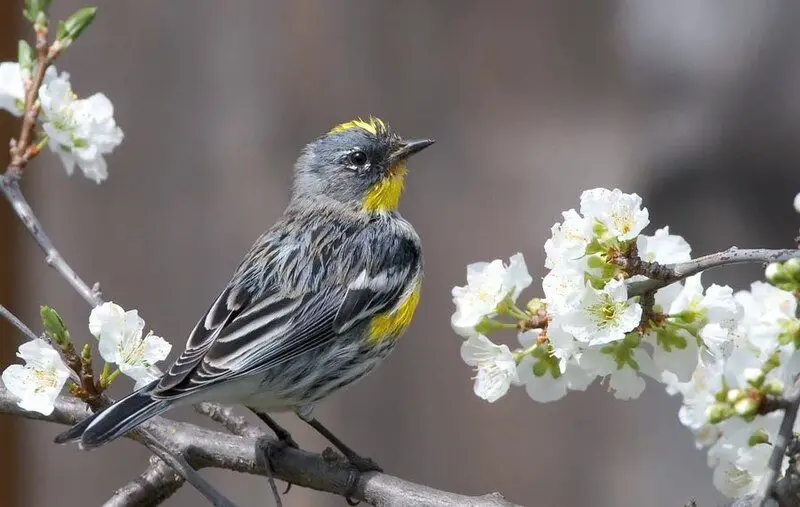
The yellow-rumped warbler is a species of bird that is regular to North American habitats. It is native to the continent and can be seen in many different places. This species is a small, slender bird with a bright yellow patch on the back of its neck.
It mostly feeds on insects but will occasionally eat berries and other fruits. This species is often found in gardens, woodlands, and other open areas. It migrates to the south during the winter months and can be seen in large numbers in the United States and Canada.
The yellow-rumped warbler is an important part of the North American ecosystem, providing food for other animals and helping to control insect populations. This species is a great reminder of the beauty and diversity of the continent’s wildlife.
| Kingdom | Animalia |
| Phylum | Chordata |
| Class | Aves |
| Order | Passeriformes |
| Family | Parulidae |
| Genus | Setophaga |
| Species | S. coronata |
5. California Scrub Jay
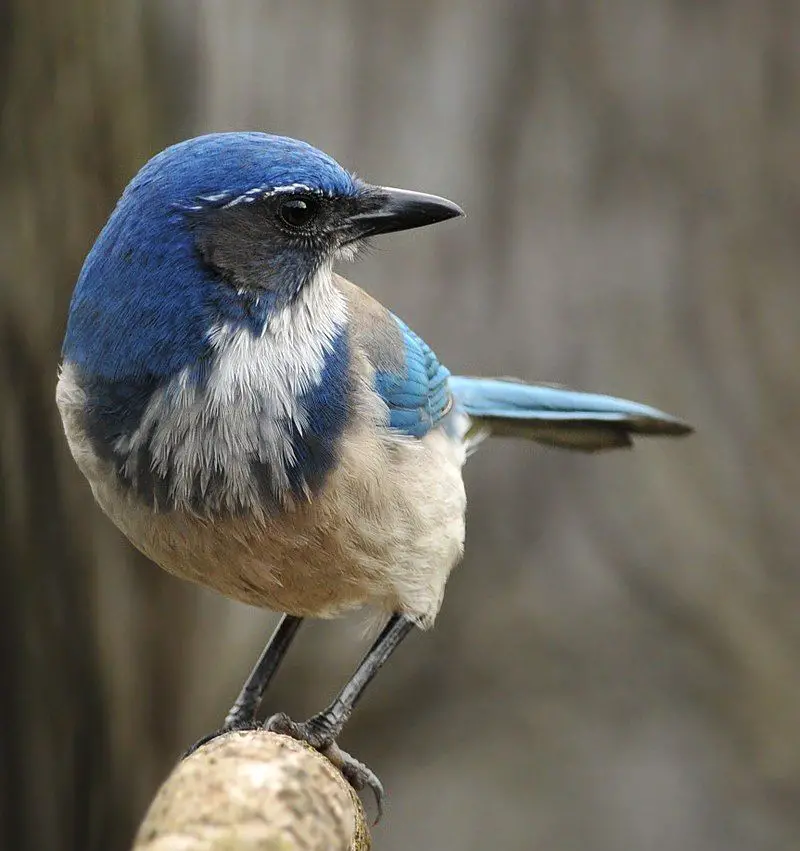
The California scrub jay is a species of bird that is native mainly to the western regions of North America.
Its range stretches from the southern region of British Columbia, all the way down through California and western Nevada, just near Reno, and it even extends west of the Sierra Nevada mountain range.
This species of scrub jay is a rather unique bird, as it is the only type of jay found in the coastal mountain ranges of California.
The California scrub jay is a medium-sized bird, measuring around 9-12 inches in length, and has grayish-blue wings, back, and tail feathers, with an off-white chest and a distinctive black stripe that runs from the eyes to the nape of the neck.
This bird is omnivorous, meaning it will feed on a variety of food sources, such as insects, small mammals, grains, berries, and acorns.
It is also known to store food in caches, which it can later retrieve. The California scrub jay is a social bird, living in groups of up to twelve individuals.
It is an active bird, often seen flying around or hopping from tree to tree, and is also known to be quite vocal, making both chirping and scolding calls. Its habitat consists of woodlands and chaparral, but it can also be found in residential gardens and parks.
Overall, the California scrub jay is an interesting and unique species of bird that can be found in the western regions of North America. It is a social bird that is active and vocal and feeds on a variety of food sources.
It is also an important part of the ecosystems of its native range and is a species that should be appreciated and respected.
| Kingdom | Animalia |
| Phylum | Chordata |
| Class | Aves |
| Order | Passeriformes |
| Family | Corvidae |
| Genus | Aphelocoma |
| Species | A. californica |
6. Western Bluebird
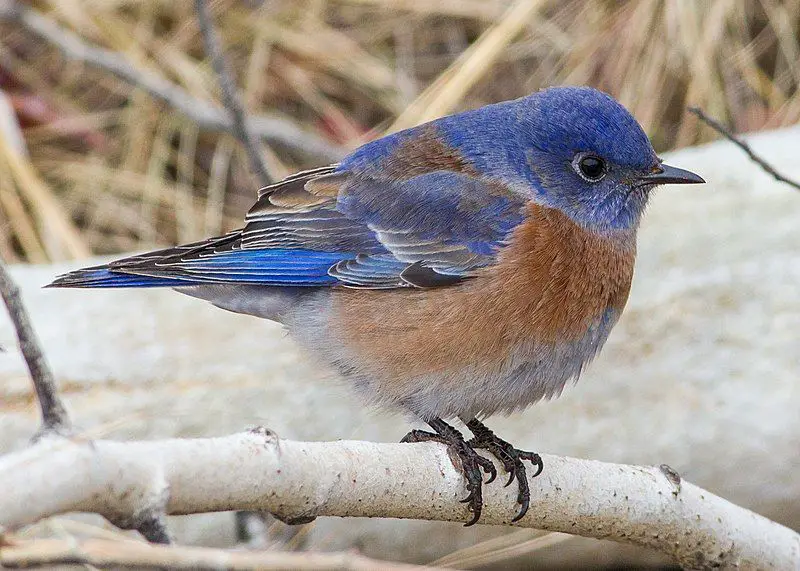
The western bluebird is a beautiful bird native to North America. It is a member of the thrush family and is a small bird, usually measuring around 6.5 inches in length. Its diet consists mainly of insects, fruit, and berries.
Its wings are blue-gray, while its back and chest are a deep chestnut red. It has a white belly and a small black mask around its eyes. The western bluebird makes its home in open woodlands, especially in areas with lots of dead trees and snags.
It is often seen perched on wires or fence posts, looking out for food. It can also be seen flitting from tree to tree in search of insects, fruit, and berries. The western bluebird is a social bird and often nests in colonies.
It builds its nest in a hole or crevice in a tree trunk or a birdhouse. During the breeding season, the female builds the nest and incubates the eggs, while the male brings food for her and the chicks.
The western bluebird is of least concern for conservation status, although its populations have been declining due to habitat destruction. To help protect this species, people should plant native shrubs and trees in their gardens, and provide birdhouses for nesting.
| Kingdom | Animalia |
| Phylum | Chordata |
| Class | Aves |
| Order | Passeriformes |
| Family | Turdidae |
| Genus | Sialia |
| Species | S. mexicana |
7. Red-tailed Hawk
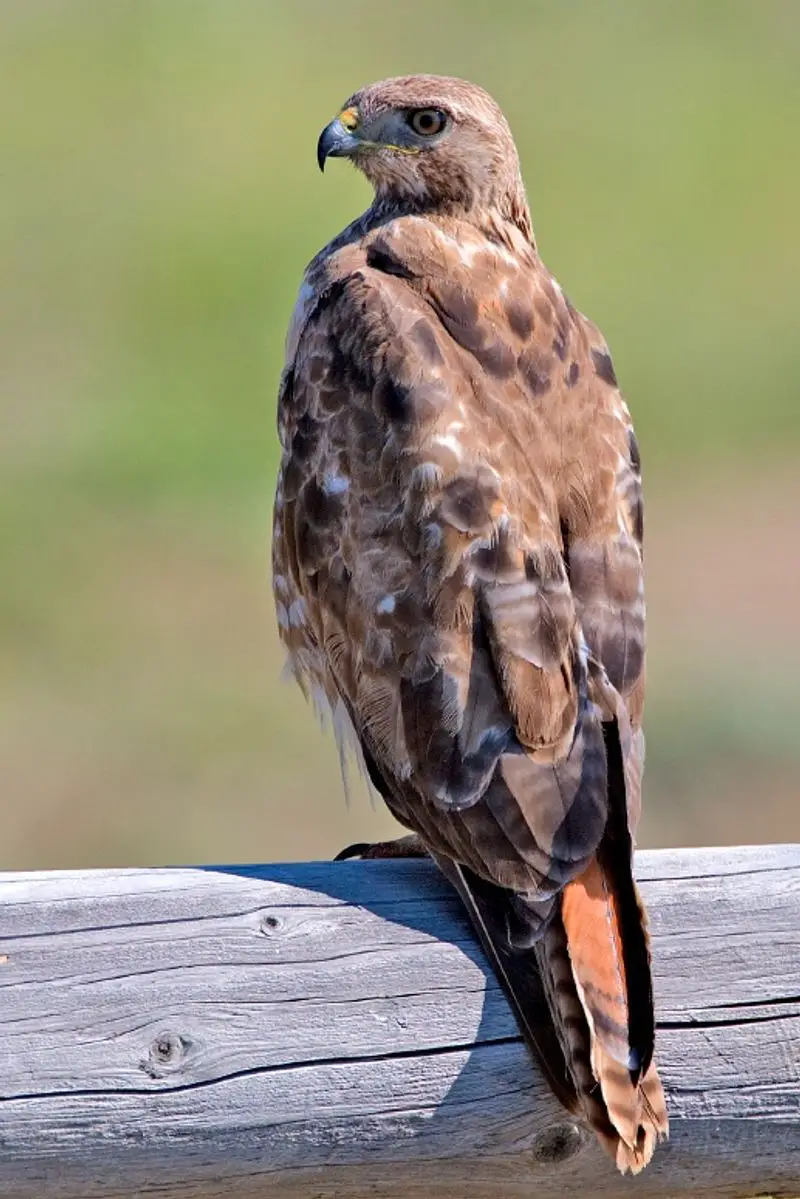
The red-tailed hawk is a bird of prey that is highly common throughout most of North America. It can be found in the interior of Alaska and northern Canada, as well as in more southern regions such as Panama and the West Indies.
This particular species of hawk belongs to the genus of Buteo, which is one of the most common genera of birds in North America and worldwide. Red-tailed hawks have a distinct appearance that sets them apart from other birds of prey.
They have bright red tails and white-and-brown mottled wings, and they are easily identified by their loud, shrill call. These birds feed mainly on small mammals and reptiles, and they can often be spotted soaring high above the treetops.
Red-tailed hawks mate for life and they often build their nests in tall trees or on cliff faces. The female lays up to four eggs in a single clutch, and both parents take turns providing food for the young until they are ready to fledge.
Red-tailed hawks are highly adaptable birds and can be found in a variety of habitats, from forests to deserts. The red-tailed hawk is an iconic species of bird in North America, and it is an important part of the continent’s ecosystem.
These birds are protected by law in many areas, and we must continue to conserve their habitats and ensure that they have plenty of food sources available.
| Kingdom | Animalia |
| Phylum | Chordata |
| Class | Aves |
| Order | Accipitriformes |
| Family | Accipitridae |
| Genus | Buteo |
| Species | B. jamaicensis |
8. Mallard
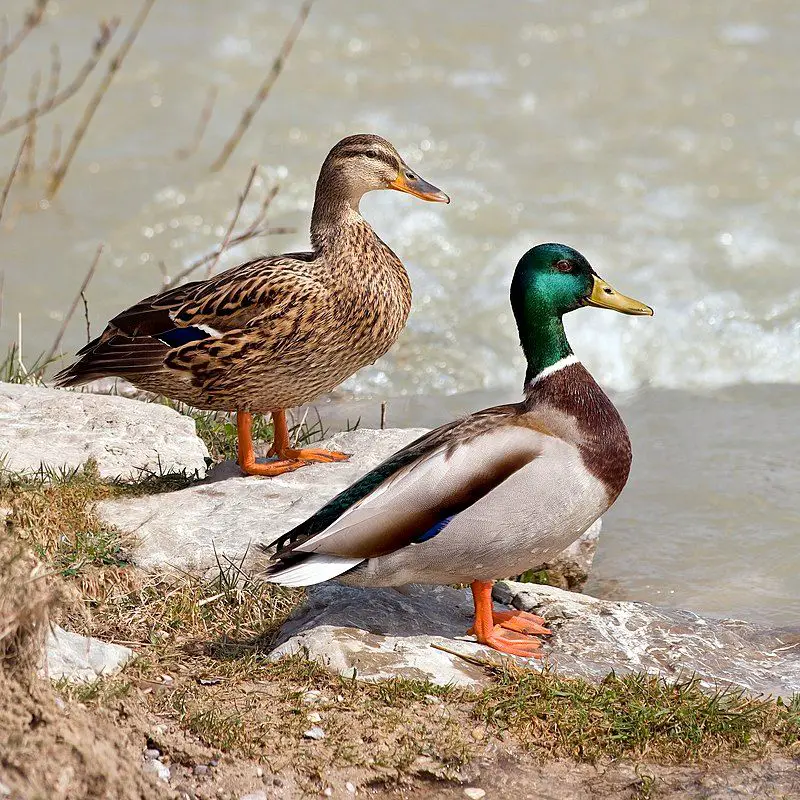
The mallard or wild duck is a common dabbling duck species found all over the world. It naturally inhabits temperate and subtropical regions in the Americas, Eurasia, and North Africa.
In addition, the mallard has been introduced to many other regions, including New Zealand, Australia, Peru, Brazil, Uruguay, Argentina, Chile, Colombia, the Falkland Islands, and South Africa.
This species is highly adaptable to different environments and can thrive in many different areas. It is a very social species, forming large flocks and congregating in wetlands, lakes, and rivers.
The mallard is also an important part of many local ecosystems, providing food for predators and helping to keep the area clean. As a result, it is an important species to conserve and protect.
| Kingdom | Animalia |
| Phylum | Chordata |
| Class | Aves |
| Order | Anseriformes |
| Family | Anatidae |
| Genus | Anas |
| Species | A. platyrhynchos |
9. Allen’s Hummingbird
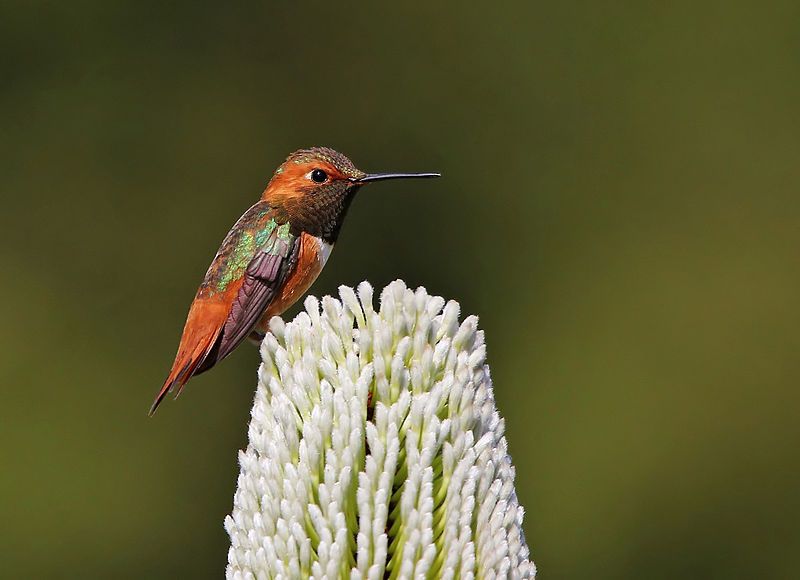
Allen’s hummingbird is a species of hummingbird that is native to and breeds in the western United States. It is a small bird, measuring only around 3 to 4 inches in length, and is identified by its green back and belly, white throat, and reddish-orange gorget.
The species is found in many types of habitats, from open woodlands to high-elevation coniferous forests, and is often seen visiting flower gardens in search of nectar. Allen’s hummingbird is one of seven species that belong to the genus Selasphorus.
This genus includes other species of hummingbirds, such as the Rufous Hummingbird and the Calliope Hummingbird. These species are recognized for their vibrant coloring and ability to hover in mid-air as they feed on nectar and insects.
They are also renowned for their acrobatic aerial displays, during which they fly back and forth in a rapid zigzag pattern.
| Kingdom | Animalia |
| Phylum | Chordata |
| Class | Aves |
| Clade | Strisores |
| Order | Apodiformes |
| Family | Trochilidae |
| Genus | Selasphorus |
| Species | S. sasin |
10. Cooper’s Hawk
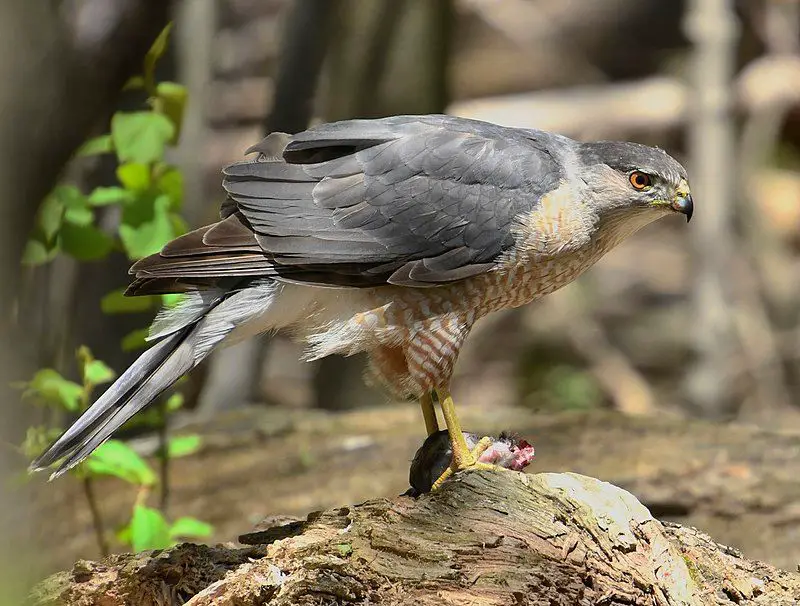
Cooper’s hawk is a bird of prey belonging to the genus Accipiter. It is a medium-sized hawk, usually measuring between 18 to 24 inches in length and weighing between 7 to 16 ounces.
This bird is native to the North American continent, with its range extending from southern Canada to Mexico. It is easily distinguished by its reddish-brown upperparts, white underparts, and barred tail.
Cooper’s hawks are known for their aggressive hunting tactics, and they prey on small birds, mammals, and reptiles. They are also known to be extremely agile, which makes them adept hunters. They have a sharp, hooked beak and powerful talons which they use to capture their prey.
Cooper’s hawks are often seen soaring high in the sky, looking for potential prey. They are a common sight in North American forests and are a welcome addition to many backyard birders.
| Kingdom | Animalia |
| Phylum | Chordata |
| Class | Aves |
| Order | Accipitriformes |
| Family | Accipitridae |
| Genus | Accipiter |
| Species | A. cooperii |
11. White-crowned Sparrow
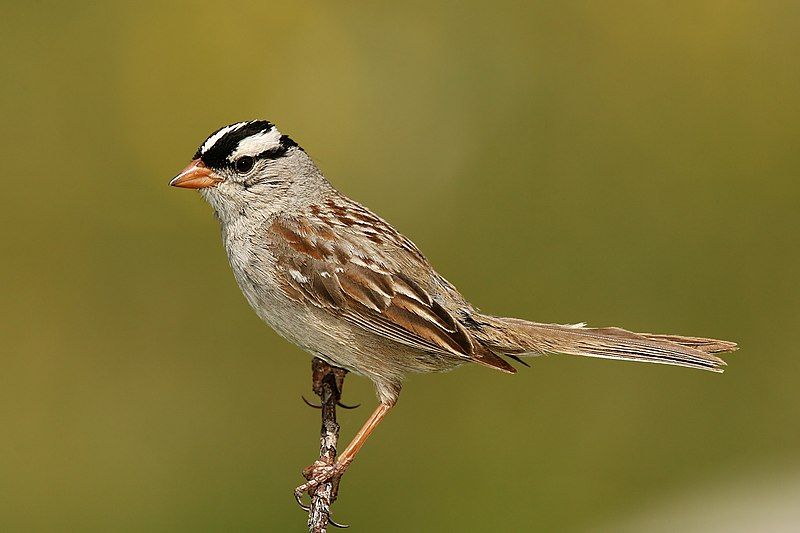
The white-crowned sparrow is a type of songbird native to North America. It belongs to the New World sparrow family, which is made up of medium-sized birds. This species is known for its distinctive grey face and black and white streaking on the upper head.
This creates a unique pattern that is easily recognizable in the wild. The white-crowned sparrow is a ground-dwelling bird, that prefers to forage in open areas such as grasslands, fields, and shrublands. They can also be found in urban areas.
These birds are usually seen in flocks, but they will also sometimes be seen alone. They will often be seen perched on tree limbs or fence posts. White-crowned sparrows primarily feed on seeds, grains, and insects. They will also eat fruit and berries when available.
This species is known to migrate, and it can be seen in most parts of North America during the winter months. During the spring, they will migrate back to their breeding grounds, where they will build their nests and raise their young.
The white-crowned sparrow is a beautiful and interesting species of bird that is found in North America. Its unique coloration and behavior make it a fascinating species to observe in the wild.
| Kingdom | Animalia |
| Phylum | Chordata |
| Class | Aves |
| Order | Passeriformes |
| Family | Passerellidae |
| Genus | Zonotrichia |
| Species | Z. leucophrys |
12. Band-tailed Pigeon
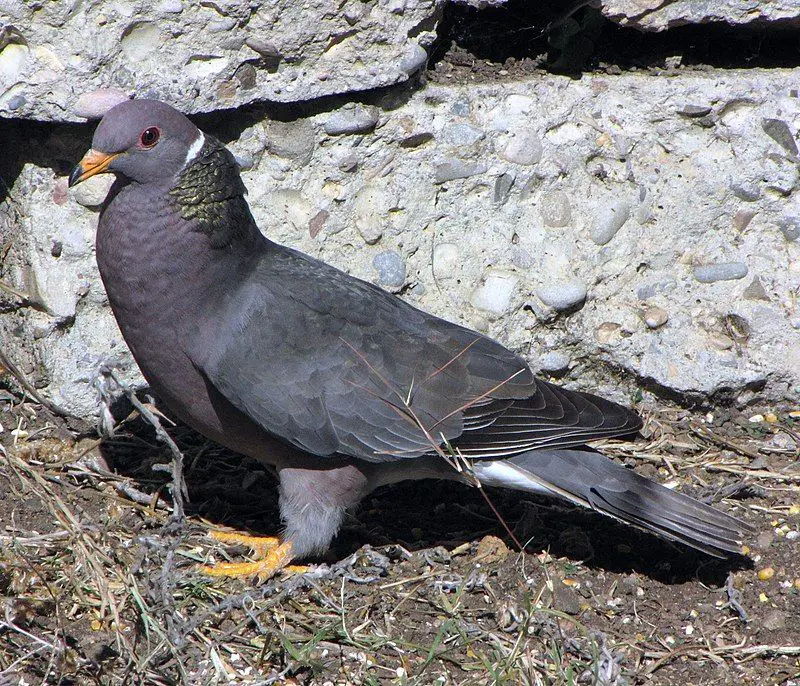
The band-tailed pigeon is a species of bird native to North and South America. It is a medium-sized pigeon, measuring between 12 and 15 inches in length and having a wingspan of up to 24 inches.
The band-tailed pigeon has distinctive plumage, with white patches on its wings and a broad, dark band across its tail. The head is gray, with a white band around its eyes, and the breast is gray-brown.
The rest of the body is gray, with black-and-white barring on the back and wings. The band-tailed pigeon feeds on a variety of seeds, fruits, and buds, and often visits agricultural areas to feed on grain and other crops. It is also known to drink from springs and streams.
The band-tailed pigeon is most commonly seen in pairs or small groups, although large flocks may form during the breeding season. The birds form strong pair bonds and build nests in tree cavities or rock crevices.
They typically lay two white eggs, which hatch after about 18 days. The young birds are independent after about two months and breed for the first time at two years of age.
The band-tailed pigeon is an important species to pre-Columbian cultures, and its feathers are still used in traditional ceremonies.
Today, the band-tailed pigeon is listed as a species of least concern by the International Union for Conservation of Nature, but its population is declining due to habitat loss and hunting.
| Kingdom | Animalia |
| Phylum | Chordata |
| Class | Aves |
| Order | Columbiformes |
| Family | Columbidae |
| Genus | Patagioenas |
| Species | P. fasciata |
13. Red-winged Blackbird
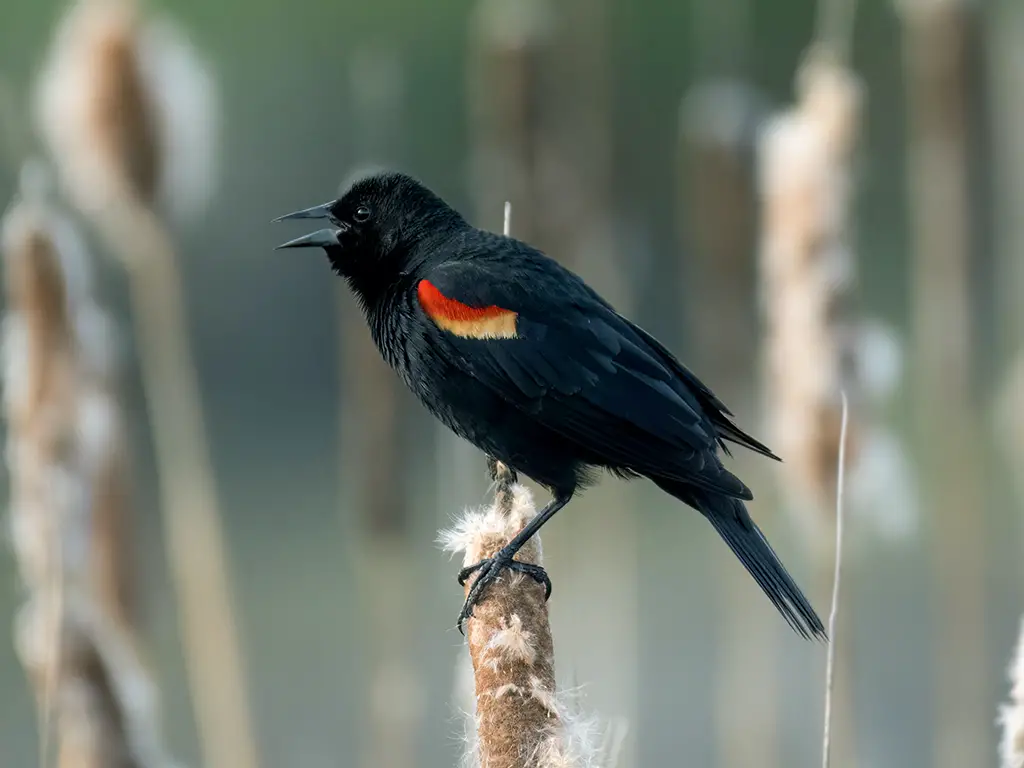
The red-winged blackbird is a beautiful bird that is found across North America and much of Central America. It is a member of the family Icteridae, more commonly known as the oropendolas, meadowlarks, grackles, or blackbirds.
The males are particularly known for their bright red shoulder patches and yellow wing bars, making them very easy to spot in the wild. In terms of size, the red-winged blackbird is approximately 8-10 inches in length.
They are mostly black, with the males having a red shoulder patch and yellow wing bars. The females are predominantly brown and lack the red shoulder patch and yellow wing bars. Red-winged blackbirds are mostly found near wetlands, marshes, and swamps.
They are omnivorous, meaning they feed on both plants and insects. They are especially fond of small insects such as beetles, grasshoppers, and flies. They also feed on various plant seeds, as well as berries and fruits.
The red-winged blackbird is an important species, as it is a major food source for numerous other animals. These birds are also important pollinators, helping to spread important plant species and ensuring the health of local ecosystems.
Overall, the red-winged blackbird is a beautiful bird that is found throughout much of North and Central America. With its bright red shoulder patches and yellow wing bars, it is a species that is easily recognizable and provides an important role in local ecosystems.
| Kingdom | Animalia |
| Phylum | Chordata |
| Class | Aves |
| Order | Passeriformes |
| Family | Icteridae |
| Genus | Agelaius |
| Species | A. phoeniceus |
14. California Thrasher
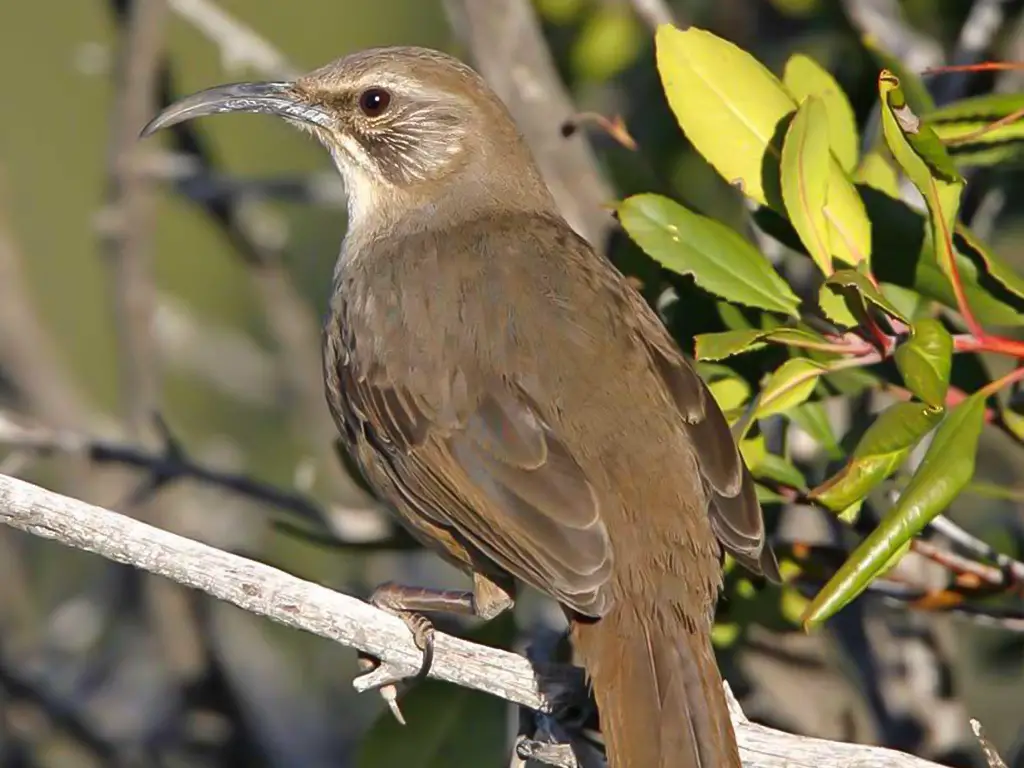
The California thrasher is a large member of the family Mimidae, which can be found predominantly in chaparral habitats in California and Baja California. This species is characterized by its size, with an average length of around 25 cm, and its predominately grey-brown plumage.
The California thrasher is also known for its unique and melodic song, which is made up of a combination of whistles, trills, and warbles. Additionally, it is the only species of Toxostoma that is found throughout most of its range.
Its diet consists mainly of insects and fruits, which it forages for on the ground or in shrubs and trees.
The California thrasher is an important species for the conservation of chaparral habitats in California, as it helps to disperse the seeds of the plants that it forages from.
| Kingdom | Animalia |
| Phylum | Chordata |
| Class | Aves |
| Order | Passeriformes |
| Family | Mimidae |
| Genus | Toxostoma |
| Species | T. redivivum |
15. Green Heron
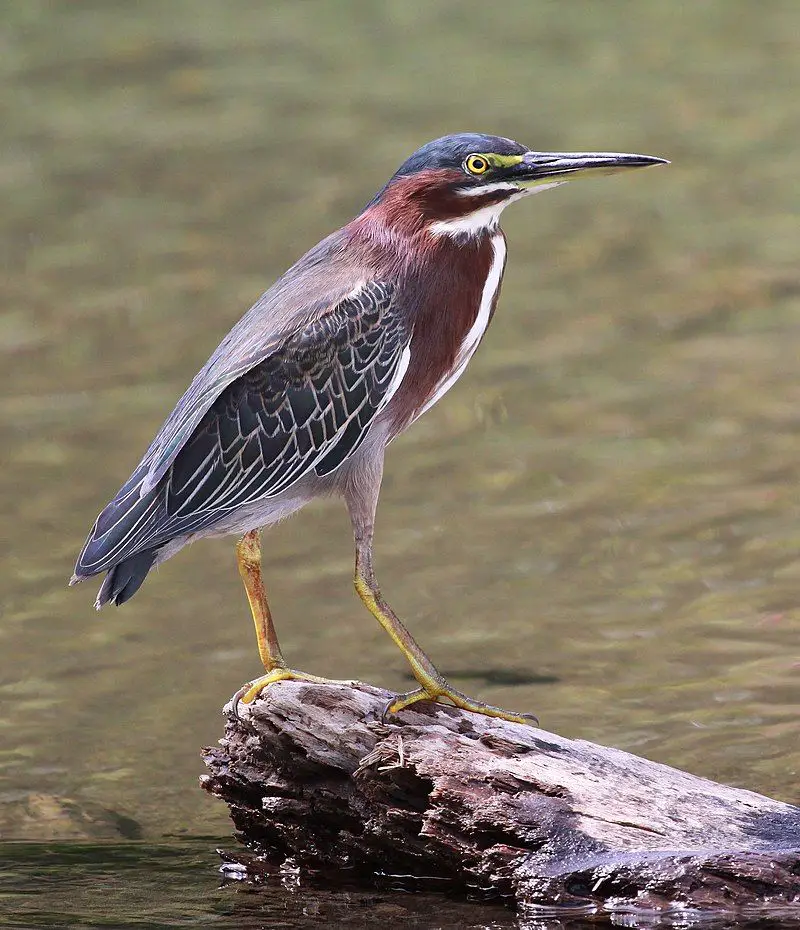
The Green Heron is a species of heron that is native to both North America and Central America. Its scientific name is Butorides virescens.
The name Butorides comes from Middle English and translates to “bittern” while the second part of the name, virescent, is Latin for “greenish”. This species of heron is usually characterized by its small size and its distinctive greenish coloration.
Green Herons inhabit wetland areas, such as marshes, swamps, and tidal flats. They are known to feed on a variety of small aquatic creatures, including fish, frogs, and insects.
They are also known to use tools to help them capture their prey, such as lure fishing. Green Herons are solitary birds and usually migrate in small groups. During the breeding season, they can be seen in pairs.
They build their nests in tall trees or shrubs to protect their eggs from predators. The female Green Heron lays three to five eggs which hatch after about two weeks.
Green Herons are an important part of many ecosystems and play an important role in keeping aquatic populations in balance. They are also an important food source for larger predators, such as hawks and owls.
Despite their importance, Green Herons are still vulnerable to habitat destruction and pollution. Therefore, we must work to protect and conserve these important animals.
| Kingdom | Animalia |
| Phylum | Chordata |
| Class | Aves |
| Order | Pelecaniformes |
| Family | Ardeidae |
| Genus | Butorides |
| Species | B. virescens |
16. Costa’s Hummingbird
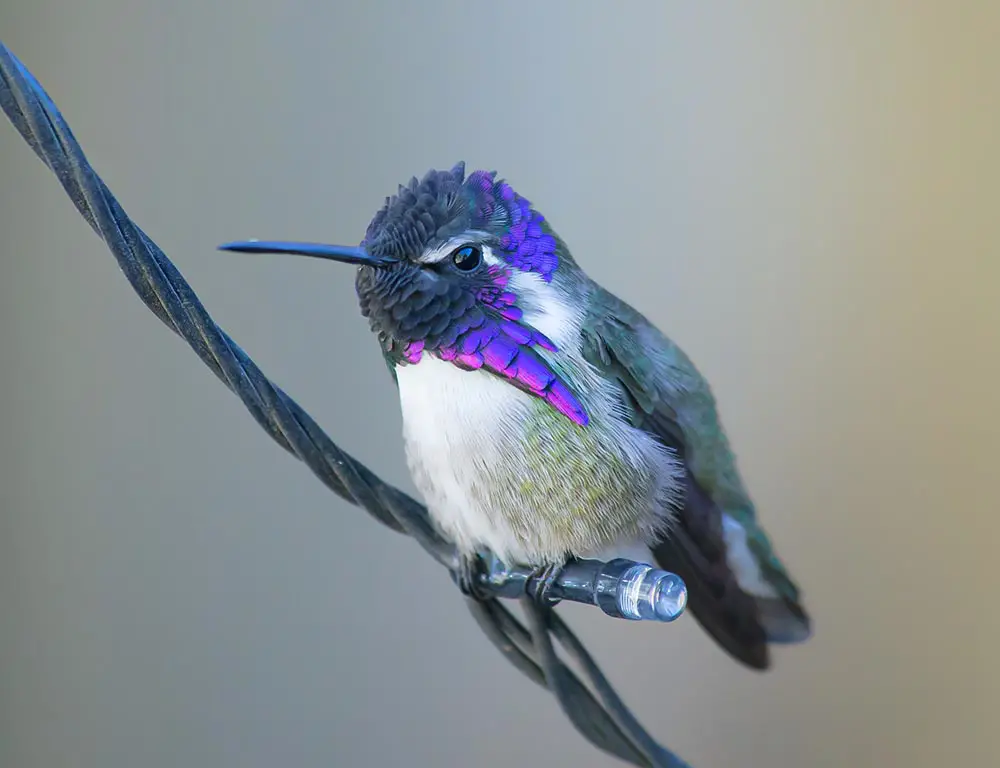
Costa’s hummingbird is a species of hummingbird that belongs to the family Trochilidae. It is native to the arid regions of the southwestern United States and northwestern Mexico.
During the winter months, the species is known to migrate towards the coastal regions of western Mexico. This species of hummingbird is easily identifiable by its bright pinkish-red throat and wings, and its greenish-brown body.
The males of this species are known to be slightly larger than the females, and they also have a longer tail. Costa’s hummingbirds are usually found in open areas near desert shrubs and cacti.
They feed on nectar and insects, and they are known to be quite territorial, defending their feeding grounds aggressively against other hummingbirds. They are also known to be quite vocal, producing a variety of chirping and chattering noises.
| Kingdom | Animalia |
| Phylum | Chordata |
| Class | Aves |
| Clade | Strisores |
| Order | Apodiformes |
| Family | Trochilidae |
| Genus | Calypte |
| Species | C. costae |
17. Turkey Vulture
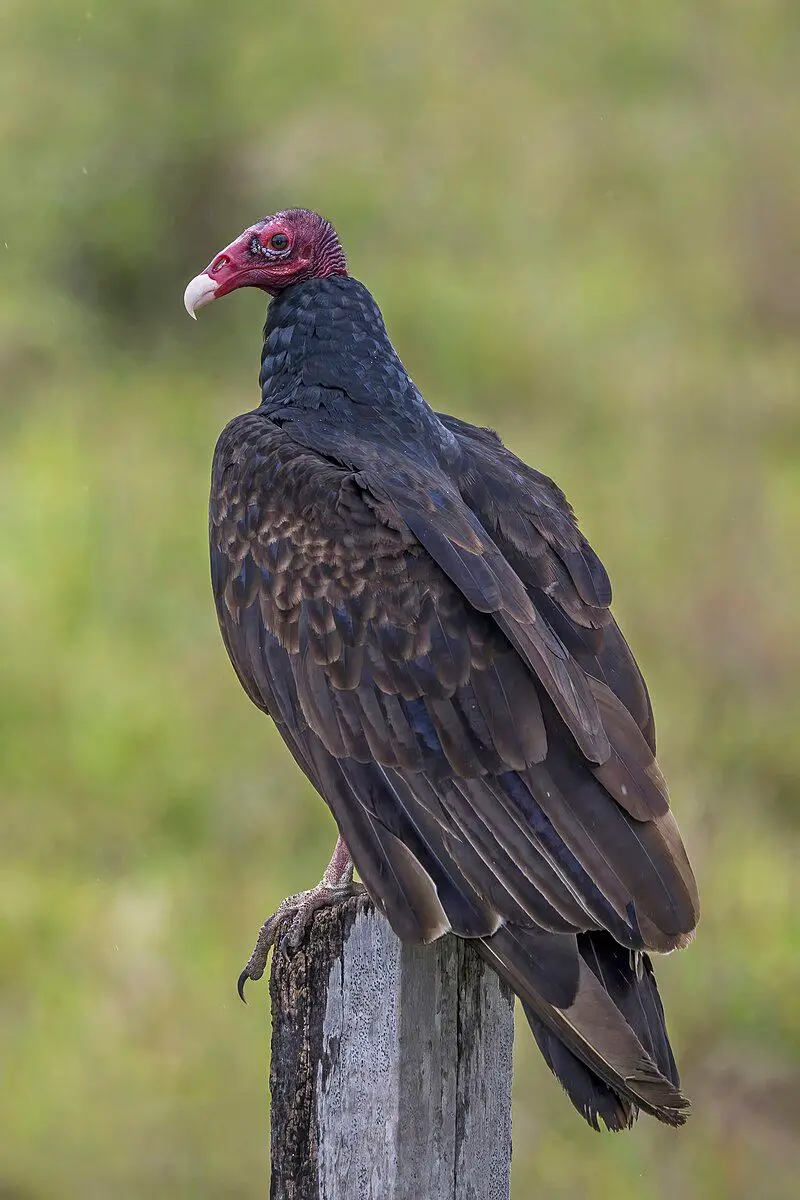
The turkey vulture is a species of New World vulture that is found across a wide range of habitats. It is the most widely distributed of all the New World vultures, and is classified in the genus Cathartes and family Cathartidae.
This species of vulture is found across a vast geographical range, stretching from southern Canada to the southernmost tip of South America.
This means that it is capable of thriving in a variety of different habitats, from open grasslands to tropical forests. The turkey vulture is a scavenger, feeding mainly on carrion. It has an excellent sense of smell which it uses to locate its food.
It has a bald red head, with black feathers covering its body. Its wingspan can be up to six feet wide, allowing it to soar through the air with ease. The turkey vulture plays an important role in the environment, helping to keep it clean by consuming carrion.
They help to recycle vital nutrients back into the environment and provide a valuable service to other species by keeping the environment clean of dead animals. The turkey vulture is also interesting to observe, due to their graceful flight and unique behavior.
They are also an important part of many Native American cultures, often depicted in artwork and stories. All in all, the turkey vulture is a fascinating species that plays an important part in its environment.
| Kingdom | Animalia |
| Phylum | Chordata |
| Class | Aves |
| Order | Accipitriformes |
| Family | Cathartidae |
| Genus | Cathartes |
| Species | C. aura |
18. Loggerhead Shrike
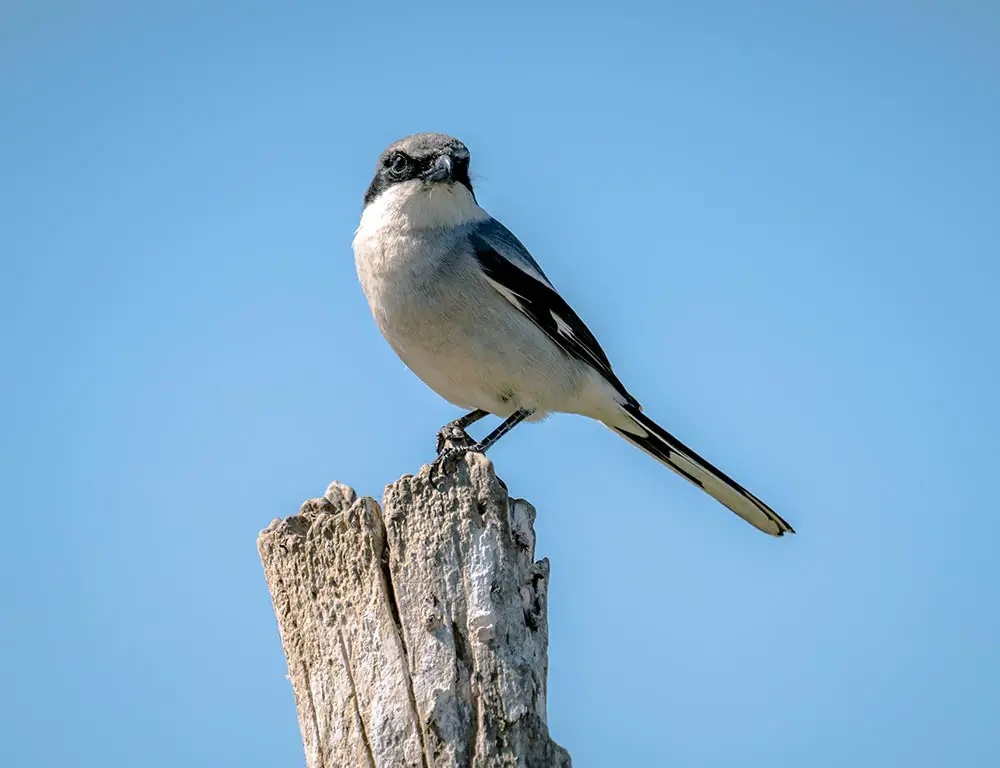
The loggerhead shrike is a type of passerine bird, which is part of the Laniidae family. This species of bird is exclusive to North America and is not found anywhere else in the world.
The northern shrike is related to the loggerhead shrike but is found in more northerly regions, such as Siberia. This species also has a wider range than the loggerhead shrike but is not as common in North America.
The two species are similar in many aspects, including their diet, habitat, and behavior. However, the northern shrike is known to have a more aggressive nature than the loggerhead shrike.
Due to the loggerhead shrike’s range being exclusive to North America, it is considered an endemic species. This means that it is only found in that area, and cannot be found anywhere else in the world.
As a result, the loggerhead shrike is at a greater risk of extinction than the northern shrike, which has a more widespread range. In terms of physical characteristics, the loggerhead shrike is larger and more robust than the northern shrike.
It has a black mask over its eyes and a black band across its wings. Its legs and beak are also black, and it has a white throat and chest. In addition, it has a large hooked bill, which it uses to capture and kill its prey.
In terms of habitat, the loggerhead shrike prefers open woodlands, grasslands, and fields. It is also known to inhabit agricultural areas, such as farms, orchards, and vineyards. The northern shrike resides in more boreal forests, tundra, and taiga.
The loggerhead shrike is an important species in its native range, as it helps to control the population of small mammals and insects. It is also a popular species among birders, due to its unique characteristics and behavior.
With proper conservation efforts, the loggerhead shrike will be able to continue to thrive in its native range.
| Kingdom | Animalia |
| Phylum | Chordata |
| Class | Aves |
| Order | Passeriformes |
| Family | Laniidae |
| Genus | Lanius |
| Species | L. ludovicianus |
19. American kestrel
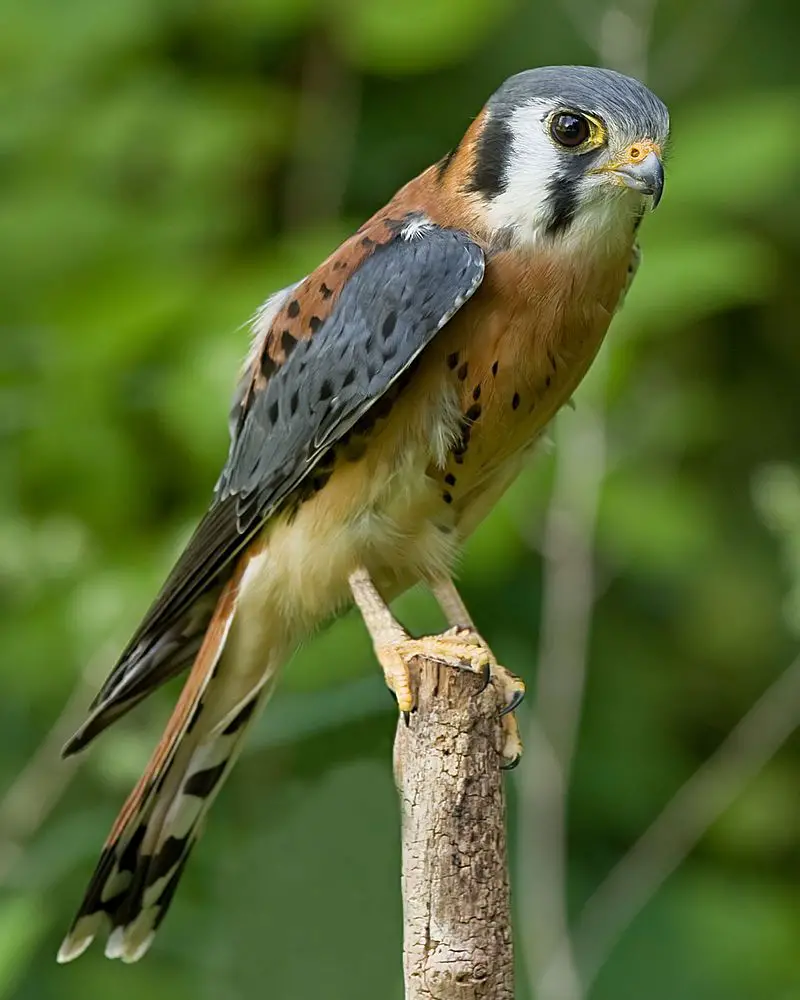
The American kestrel, also known as the sparrow hawk, is a small and incredibly common falcon species that can be found in North America. It has a wide range in size, depending on its subspecies and sex, with males typically being a bit larger than females.
Generally, it varies in size from the weight of a blue jay to that of a mourning dove. This makes it one of the smallest and lightest birds of prey in the region. Its wingspan can range from 21 to 24 inches and its body length from 8 to 12 inches.
The American kestrel has a distinctive plumage, with a white or light-brown chest and a black-and-white barred back. Its diet mainly consists of small mammals, such as mice, moles, voles, and shrews, as well as lizards, snakes, and large insects.
It also feeds on small birds, like songbirds and sparrows.
| Kingdom | Animalia |
| Phylum | Chordata |
| Class | Aves |
| Order | Falconiformes |
| Family | Falconidae |
| Genus | Falco |
| Species | F. sparverius |
20. California Quail
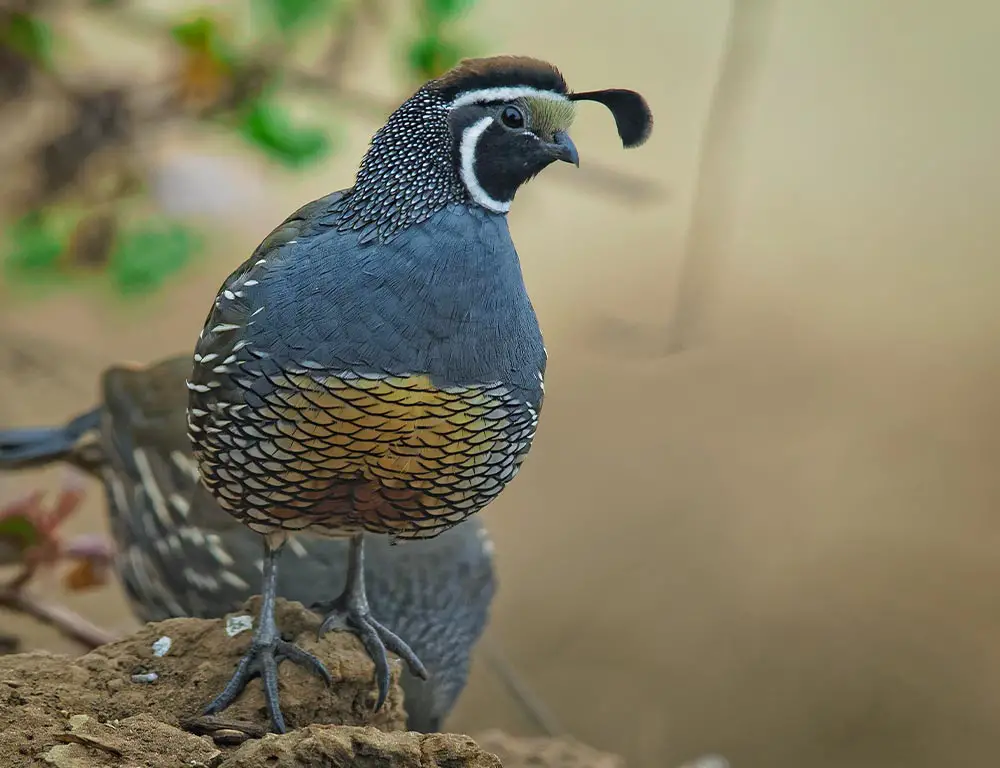
The California quail, also known as the California Valley quail or Valley quail, is a small bird in the New World quail family that lives on the ground.
This species is easily recognizable by its unique crest or plume, which is made of six feathers that hang down toward the beak. The color of the plume differs between males and females; the males have black feathers while the females have brown.
The flanks of the birds are brown with white stripes. This striking combination of colors serves as an effective camouflage when the birds are nesting in grassy areas. The California quail is a sociable species and is often seen in groups of up to 30 birds.
They create an elaborate network of trails through the grass and can find their way back to their nests through these pathways. They are omnivorous, meaning they feed on both plants and insects.
The California quail is an important species to local ecosystems in California, providing food for predators such as foxes, coyotes, and snakes. They also play a role in dispersing the seeds of native plants, helping to maintain a healthy, diverse environment.
| Kingdom | Animalia |
| Phylum | Chordata |
| Class | Aves |
| Order | Galliformes |
| Family | Odontophoridae |
| Genus | Callipepla |
| Species | C. californica |
21. Townsend’s Warbler
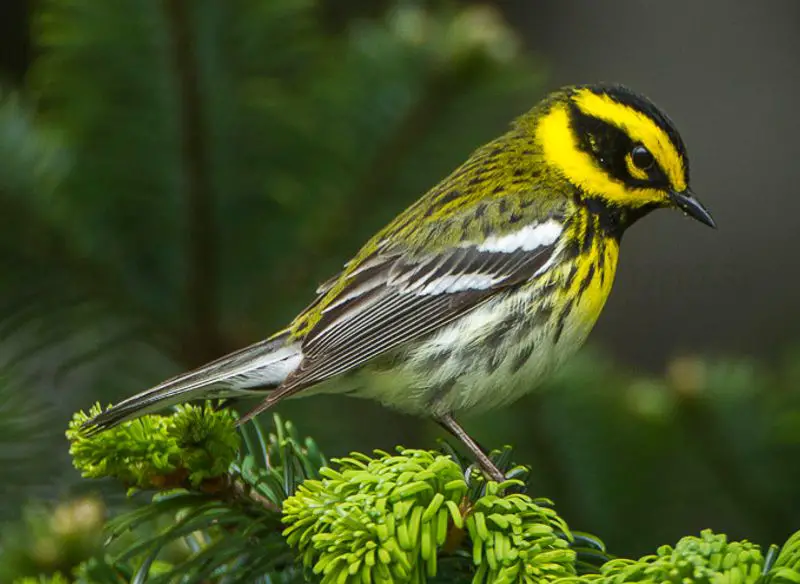
Townsend’s warbler is a species of migratory songbird native to parts of North America. It is a species of the New World warbler family, which includes over 50 species of passerine birds found in Central and South America.
The Townsend’s warbler is a small bird, measuring around 13 cm in length and weighing around 11 grams. It has a grayish-green head and back with yellow underparts and a white throat. Its wings and tail are black with white markings.
Townsend’s warbler breeds in coniferous forests in the western United States and Canada, from British Columbia to California. During winter, it migrates to Mexico, Central America, and the Caribbean. It feeds on small insects and spiders, as well as nectar from flowers.
It has a complex song that consists of varied notes and trills and is used for territorial and courtship displays. It is a common sight in summer in its breeding range, but its population has been declining due to habitat loss.
| Kingdom | Animalia |
| Phylum | Chordata |
| Class | Aves |
| Order | Passeriformes |
| Family | Parulidae |
| Genus | Setophaga |
| Species | S. townsendi |
22. Calliope Hummingbird
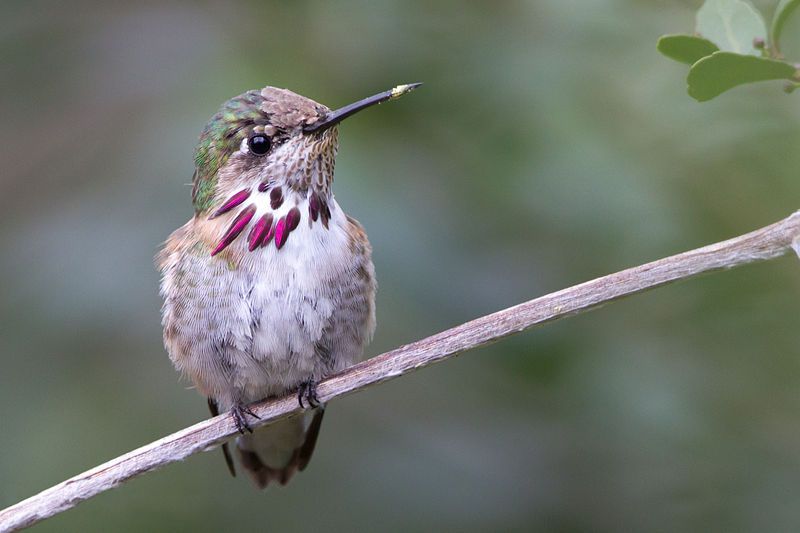
The Calliope Hummingbird is a unique species of bird native to the United States and Canada. It is the smallest of all the native birds in these countries. Its breeding range is mainly in the western part of the continent, stretching from California to British Columbia.
During the winter, however, the species migrates to the Southwestern United States, Mexico, and Central America, returning to its original breeding grounds when spring arrives. The Calliope Hummingbird is a remarkable species for its size, as well as its ability to migrate so far.
Its small size makes it particularly vulnerable to predators and other dangers, so it must be especially careful when making its long journey.
Despite this, the species has managed to survive and thrive and is now a common sight in many parts of the American Southwest. The Calliope Hummingbird is also notable for its distinctive call. Its song is a high-pitched hum, often likened to the sound of a calliope.
This humming sound is often used to attract mates and establish territories.
The species’ bright colors also make it stand out from its surroundings, making it a beautiful sight to behold. Overall, the Calliope Hummingbird is an amazing species with a unique history and a remarkable ability to survive and thrive.
Its small size and long migration make it an impressive example of nature’s resilience and adaptability.
| Kingdom | Animalia |
| Phylum | Chordata |
| Class | Aves |
| Clade | Strisores |
| Order | Apodiformes |
| Family | Trochilidae |
| Genus | Selasphorus |
| Species | S. calliope |
Conclusion
San Bernardino is home to an incredible variety of birds. From the iconic California Condor to the colorful Western Tanager, this region is a great place to explore and observe birds in their natural habitat.
With its diverse habitats, from deserts to mountains, San Bernardino offers birders a unique opportunity to explore and appreciate the beauty of the local avian species.
With a bit of luck, any birders in the area should be able to see a variety of birds and experience some truly special moments in nature.